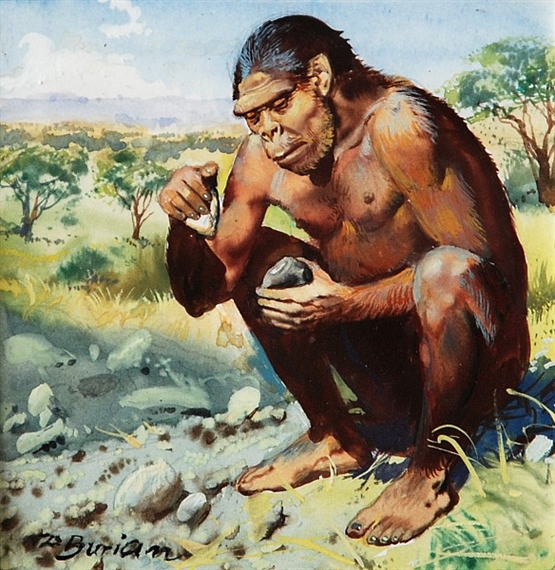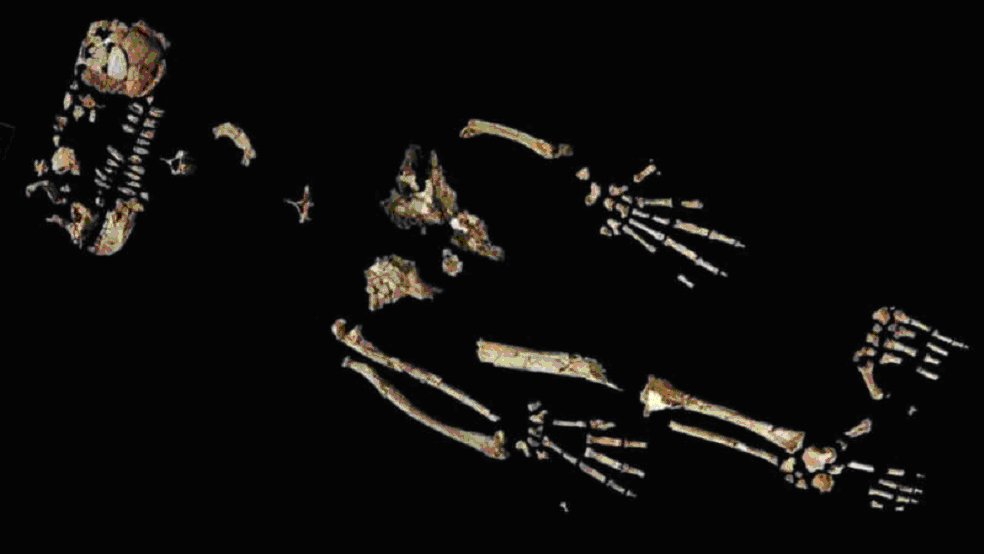Everyone knows that very few animals walk on only two legs or more technically, are bipedal. It’s true that some creatures, like a bear may rear up onto their hind legs in order to grab some fruit from a tree or to get a better look at their surroundings like a prairie dog. Such species don’t walk very far however and are glad to get back down onto all fours. Then there are some animals like the kangaroo or a Tyrannosaurus rex who walk all the time on two legs but have a have a nice big tail to give them balance.

Our close relatives the great apes often walk on two legs when they are carrying food or perhaps a child but even they prefer to knuckle walk, gaining some balance and propulsion from their forelegs. Only humans walk fully upright, on two legs with no tail. In fact paleontologists have created a special name for those species of ape who walked fully upright, they are called hominids and consist of two geneses, our own genus Homo and our extinct relatives the Australopithecines.

When and why did our hominid ancestors evolve such an unusual way of getting about? There’s good fossil evidence that our ancestors were primarily bipedal going back at least 3.5 million years ago (MYA). The leg and arm bones of the famous fossil ‘Lucy’ discovered in the 1970s show that her species, Australopithecus afarensis, was fully bipedal that long ago. So somewhere between 3.5 million years ago when A afarensis lived and about 7 million years ago when our ancestors broke away from the ancestors of the Chimpanzees is when we became fully upright. Exactly when is still a matter of debate.

Why our ancestors became bipedal is even more hotly contested. Charles Darwin, who correctly pointed out that chimps and gorillas were our closest living relatives, suggested that our ancestors became more and more bipedal as we used our hands more to carry things or use tools. Later evolutionists have theorized that as our ancestors moved out of the African forest into the savanna the ability to see above the tall grass may have been the cause. Another possibility that has received some support is that a fully upright posture would reduce the amount of skin that is exposed to the harmful effects of sunlight, remember this is also the same period of time where our ancestors were losing a large part of their body hair.


With so much controversy any piece of additional evidence becomes even more important. That’s why a new study by a team of anthropologists with lead author Thomas C. Prang of the Department of Anthropology at Texas A&M University and published in the journal Science Advances of a 4.4 million year old partial skeleton has gathered attention. The fossil belongs to a species called Ardipithecus ramidus or simply ‘Ardi’ for short. Ardi may be only a partial skeleton, too poorly preserved to tell if it was fully bipedal or not, however it does date from the critical time between our last common ancestor with chimps and A afarensis. More importantly Ardi’s left hand is exceptionally well preserved. This allowed the team of researchers to make a series of morphological comparisons to the hands of our modern knuckle walking relatives, chimps and gorillas as well as modern humans and even our fully upright ancestors like A afarensis.

What the researchers found was that in a number of key features including the size and shape of individual bones of the hand Ardi was much closer to that of modern apes then that of any hominid, modern or ancient. According to Doctor Prang, “…,we found evidence for a big evolutionary ‘jump’ between the kind of hand represented by Ardi and all later hominin hands, including that of Lucy’s species. This ‘evolutionary jump’ happens at a critical time when hominins are evolving adaptations to a more human-like form of upright walking and the earliest evidence for hominin stone-tool manufacture and stone tool use, such as cut marks on animal fossils, are discovered.” That time frame of somewhere between 4.4 MYA and 3.5 MYA is also crucial because it was during that time that our ancestors lost their opposing big toe so that unlike our cousins the chimps and gorillas we can no longer grasp things with our feet.

If the results of the study hold up to scrutiny that will greatly reduce the time frame during which our ancestor became fully bipedal, from about 3.5 million years to a little less than one million years. Sometime between 4.4 MYA and 3.5 MYA our ancestors took a big step toward becoming human. With an upright posture they could expand their use of primitive tools. Greater tool use would then cause an evolutionary push toward a bigger brain initiating a feedback loop of more intelligence and greater tool use.
The end result of that evolutionary ‘jump’ is our modern, human dominated world. Let’s just hope our brains and tools are sufficient to enable us to stop destroying it.
